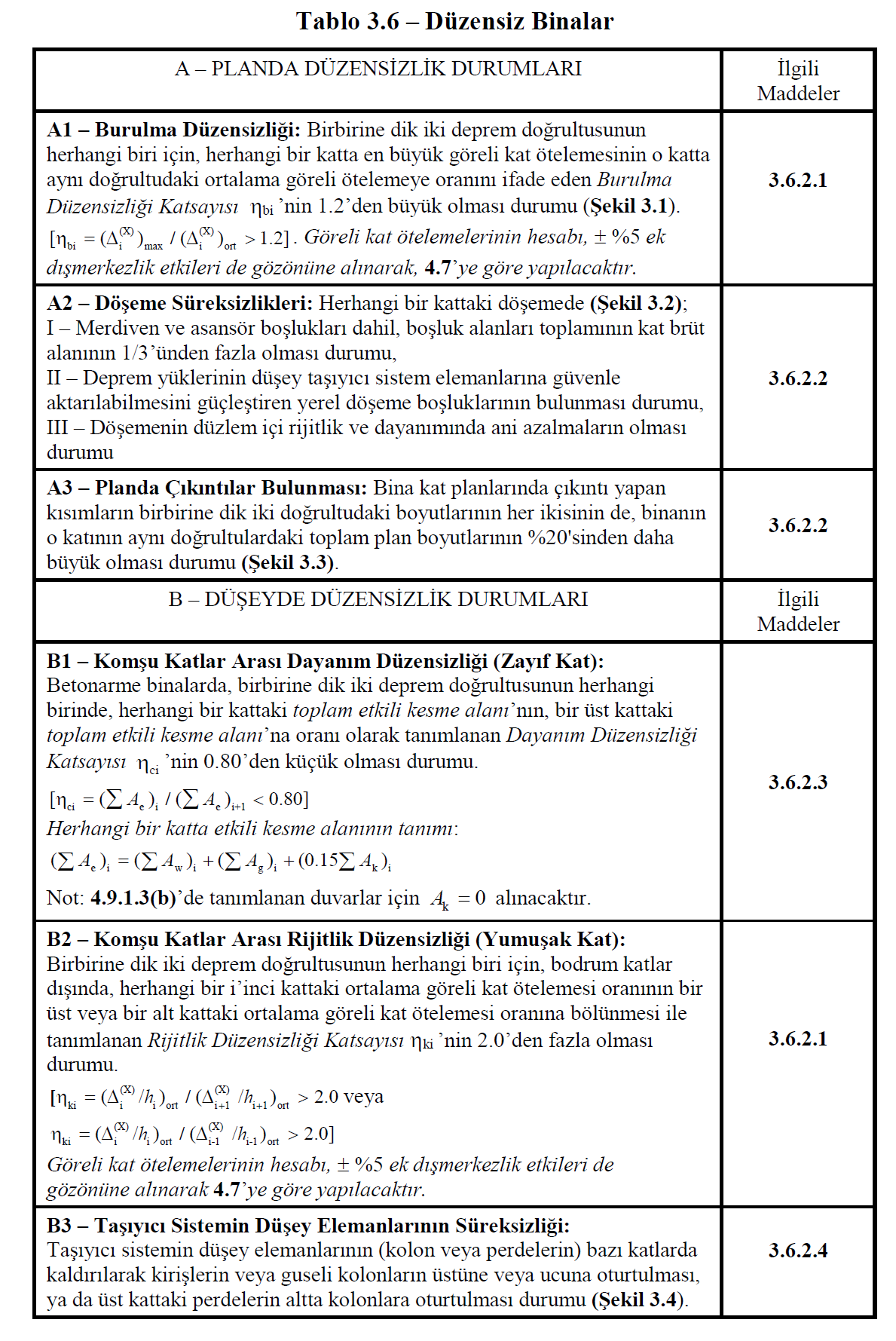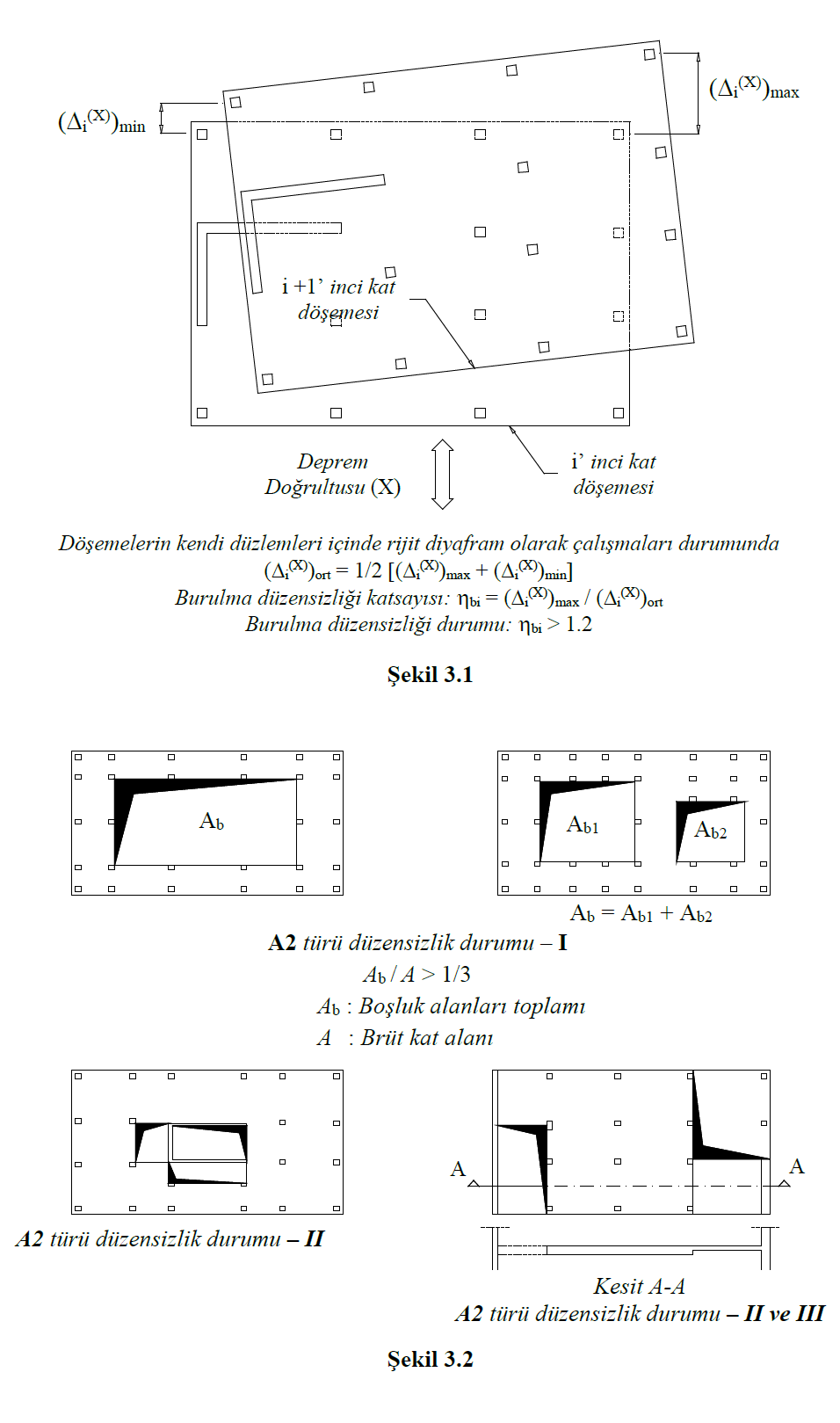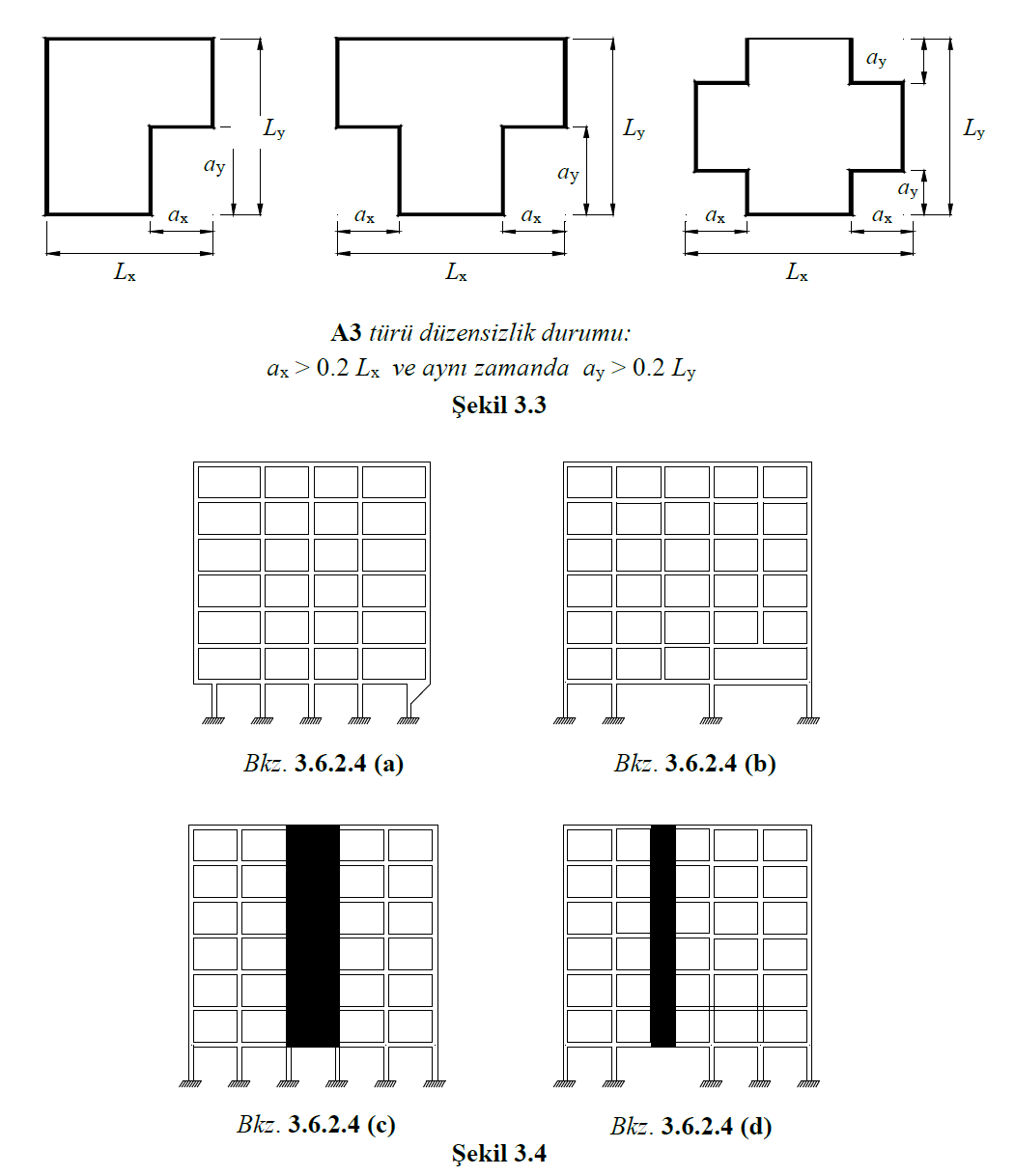Structural Irregularities from Earthquake Effect
ICONS
ΣA e = Effective shear area in the direction of the earthquake considered in any floor
ΣA g = Total of cross-sectional areas of the
structural system elements working as a curtain ina direction parallel to the earthquake direction considered in any floor ΣA k = masonry filling parallel to the earthquake direction considered in any floor sum of wall areas (excluding door and window openings)
ΣA w = sum ofcolumn cross-section effective body areas at any floor
(Δ i (x) ) av = Average reduced relative floor displacement at the i'th floor of the building
(Δ i (x) ) max = Maximum reduced relative storey displacement at the i'th floor of the building
η bi = Torsion Irregularity Coefficient defined at the i'th floor
η ci = Strength Irregularity defined at the i'th floor Coefficient
η ki = Stiffness Irregularity Coefficient defined at the i'th floor
3.6.1. Definition of Irregular Buildings
Regarding the definition of irregular buildings whose design and construction should be avoided due to the negativities in their behavior against earthquake, the situations that cause irregularities in the plan and vertical direction are given in Table 3.6 and the conditions related to them are given in 3.6.2 .
3.6.2. Conditions for Irregular Buildings
Conditions related to irregularities defined in Table 3.6 are given below:
3.6.2.1 - A1 and B2 type irregularities are the irregularities that are effective in the selection of the earthquake calculation method according to 4.6 .
3.6.2.2 - In buildings with A2 and A3 type irregularities, the floor slabs will be modeled with two-dimensional plate (membrane) or shell finite elements to show that they can safely transfer earthquake forces between vertical bearing system elements in their own planes (See 4.5.6.2 ).
3.6.2.3 - In buildings with B1 type irregularities, if the sum of the filling wall areas on the i'th floor is more than the upper floor, the filling walls will not be taken into account in the calculation of ηci. Considering the floor where ηci is the smallest, the carrier system behavior coefficient given in Table 4.1 in the range of 0.60 ≤ (η ci ) min <0.80 will be multiplied by 1.25 (η ci ) min value and applied to the entire building in both earthquake directions. However, it will never be η ci <0.60. Otherwise, the earthquake calculation will be repeated by increasing the strength and stiffness of the weak floor.
3.6.2.4 - Conditions for buildings with irregularities of type B3 are set out in (a) to (d) below :
(a) Columns are never permitted to be placed on the top or end of cantilever beams on any floor of the building or on the gussets formed in the columns below.
(b) If the column rests on a beam with support from both ends, it is sufficient to make a vertical earthquake calculation according to 4.4.3 .
(c) The curtain on the upper floors is never allowed to rest on the columns below.
(d) It is never permitted to sit curtains on any floor of the building, in their own plane, above beams, in the middle of the opening.



Next Topic
